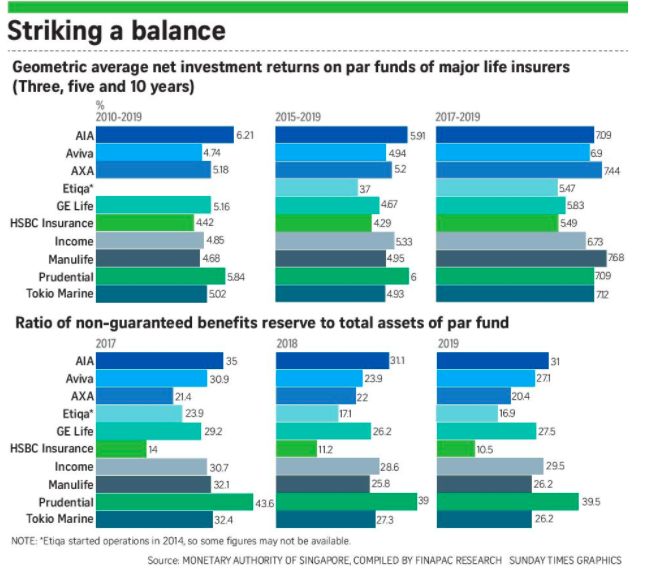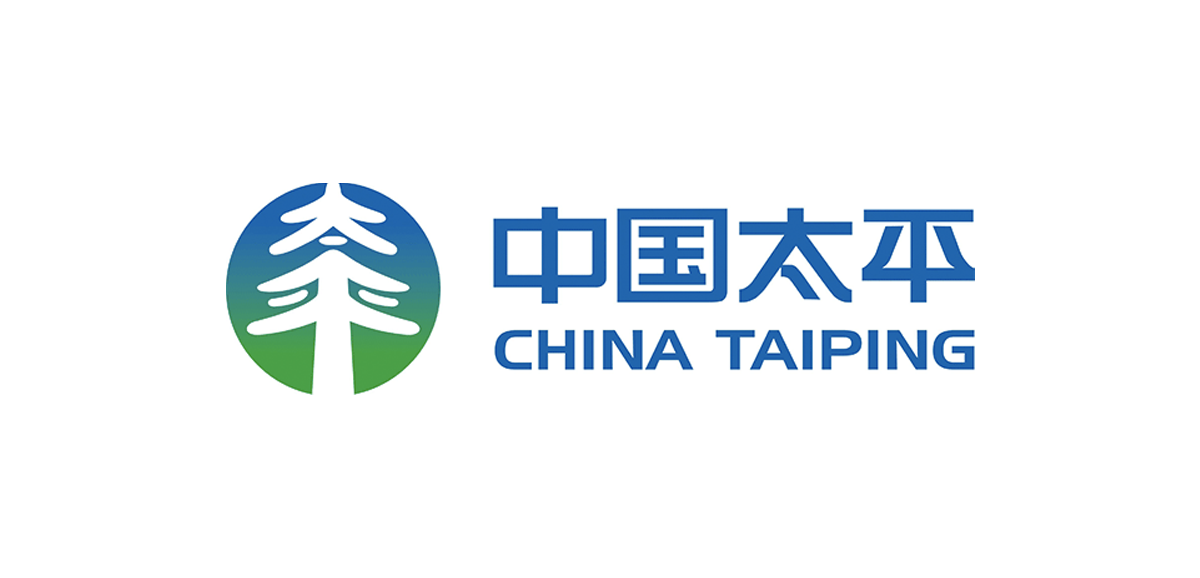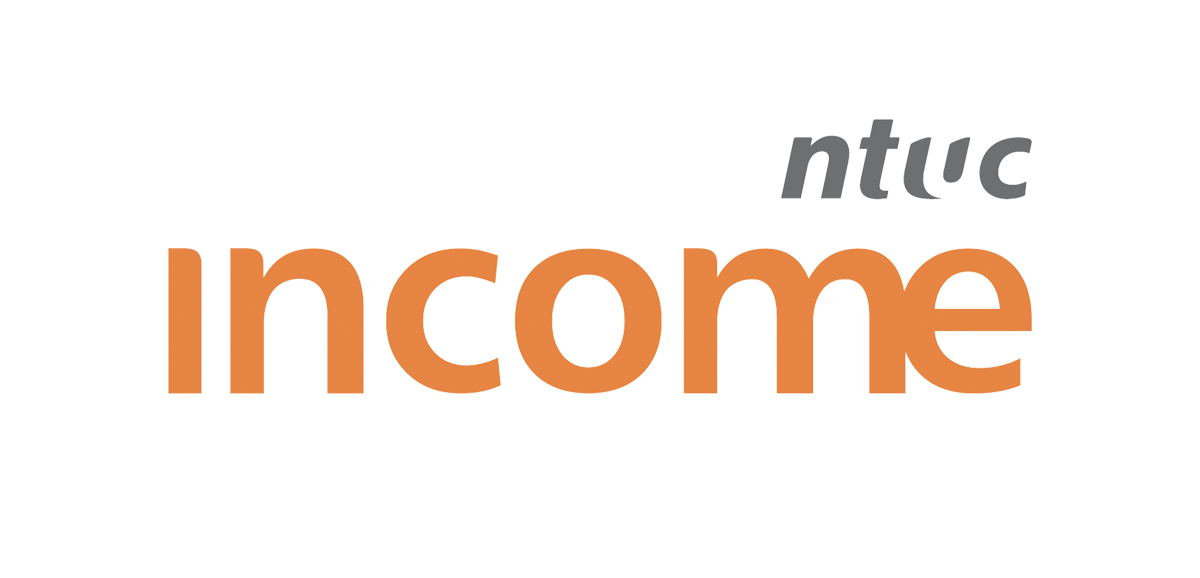7 Best Whole Life Insurance Plans in Singapore by Class
Getting life insurance is kind of like a rite of passage into adulthood. First, you start off paying your own phone bills, and next thing you know you’re meeting your financial advisor friends to understand more about the different types of life insurance available.
In this article, we’re zooming straight into whole life insurance, perhaps one of the core life insurance products.
There are many whole life plans out there and while all of them are similar, no two are the same. The minute differences and complicated terms & jargon used don’t make it very beginner-friendly either. And on top of that, as it is a big-ticket item that requires a long term commitment, making the wrong choice can cause your wallet to take a hit.
But don’t worry, we’ve taken the liberty to break down and explain the key factors you should look at when choosing your life insurance plan. Following that, we provide a high-level view of the whole life policies in Singapore and carefully selected the best plans based on criteria.
Even if this is not your first rodeo, you can skim through the first portion of the article as a refresher and jump straight into the next section to help you identify what might be the best whole life plan for you.
How to Choose a Whole Life Plan? Factors to Consider
Protection Coverage
Naturally, when getting life insurance, the first thing to consider is the type of protection that you require.
To alleviate the financial strain that might occur if anything untoward happens to you, it is recommended that you are sufficiently covered for:
- Death
- Terminal Illness (TI)
- Total and Permanent Disability (TPD)
- Early Critical Illness (ECI)
- Critical Illness (CI)
However, it is up to you to decide whether you want an all-encompassing whole life plan that covers everything; or do you already have existing insurance for TPD and/or CI and are just looking for death coverage?
At its most basic, all whole life plans cover you for death and terminal illness. These days, most insurers also provide coverage for total and permanent disability (TPD) in their basic plans.
Some insurers even offer critical illness protection in your basic plan. But more often, CI and ECI coverage are available as riders that you can choose to add on if you do not have any existing or want to boost your CI coverage.
In case you find yourself requiring more coverage in your later years, some plans allow you to add on to your coverage by purchasing a new insurance plan without any medical underwriting at key life stage events. Subject to certain terms and conditions, of course.
Ultimately, the right type of protection coverage varies based on individual, so do take into account your circumstances and priorities before making your decision to ensure you get the right coverage for you and your loved ones.
After all, life insurance is a long-term commitment, and having to change or buy a new plan will incur unnecessary costs.
Total & Permanent Disability Definition
From being unable to carry out any income-generating activity to the permanent loss of specific limbs to an inability to perform a number of Activities of Daily Living (ADL), what constitutes as TPD is different for each insurer.
To further complicate this, insurers also have varying definitions of TPD depending on your age.
If TPD coverage is particularly important to you, then it’s good to do a bit more research and comparison in this area.
Some insurers cover more definitions, while other insurers, not as much. Certain insurers are also more lenient.
For example, AXA’s Life Treasure allows you the option to claim for TPD if you are unable to carry out 2 of the 6 ADLs.
Even if TPD coverage is not your highest priority, it’s good to familiarise yourself with your plan’s definitions so you’re aware of what you’re eligible to claim.
Premium Term Options
Most insurers offer you a limited pay option when paying for your whole life plan. In other words, you will pay off your premium within a selected number of years before your policy term ends.
The premium term options range from about 5 to 30 years but will differ depending on your insurer. Oftentimes, the premium terms are often in multiples of 5.
Apart from the limited pay option, some insurers allow you to choose to pay off your premiums by a certain age. However, this option is not as common.
As a rule of thumb, the longer your premium term, the higher your total premiums will be.
There’s no free lunch in this world, so the flip side – that is opting for a shorter premium term – would mean having to fork out slightly more money as compared to a longer premium term.
Although, if you look at everything in totality, the total amount paid is lower.
You should also consider how often you would like to pay your premiums – annually, quarterly, monthly, etc. Similarly, the higher the frequency of payment, the higher your total premiums.
While as Singaporeans, we’re all very kiasu and would want to pay the lowest amount, it’s important to choose a premium term where you’re able to comfortably pay the premiums due.
If you choose a premium term that is too short, and you’re unable to pay your premiums when they are due, it would cause the automatic premium loan to kick in.
Essentially, this means that your insurer will draw down from your policy’s cash value to pay off your premiums.
This not only affects your policy’s cash value but also incurs interest that you would need to pay off. If this occurs, your total cost would most likely be much more as compared to choosing a longer premium term that you can afford.
Expected Rate of Return & Cash Value
If you’re not aware, whole life plans provide you with the opportunity to grow your wealth on top of providing you with protection.
For a quick crash course, they partake in the profit of your insurer’s participating fund to accumulate cash value in the form of guaranteed and non-guaranteed bonuses.
Unlike certain investment instruments, your non-guaranteed bonus is not equal to the rate of return but is heavily linked to it.
Your insurer might declare your non-guaranteed bonus, which will be added to your policy’s guaranteed cash value. But this is usually not immediately accessible until your policy matures or a claim is made.
The following affect the non-guaranteed bonuses you can expect to receive from your policy:
- Smoothing of Bonuses: Where your insurer might declare lower bonuses in years that the par fund performs well and higher bonuses in years where the par fund does not do as well to reduce fluctuation in your non-guaranteed returns.
- Investment Performance: The participating fund’s rate of return
- Insurer’s Expense: Includes claims made to other participating policyholders and your insurer’s expense in managing the par fund
While I am of the opinion that mixing both protection and investment in the same plan is not the wisest use of your hard-earned money, there are instances that a whole life plan is suitable.
Now that you’re well-acquainted, if you’re looking to get a whole life plan, taking a look at the expected cash value that the different insurers can offer is a good call.
Yes, it may be confusing and headache-inducing, but future you will thank yourself for the effort that you’ve put in.
If anything, you can reach out to your financial advisor (or one of our knowledgeable financial advisors if you don’t have an existing one) to help you break down the expected returns and cash value in layman terms.
What to Look Out For When Analysing Your Expected Cash Value
Alternatively, if you want to do your own research before going to a financial advisor, here are the key things to look out for:
Geometric Average of the Par Fund’s Net Investment Returns
Rather than looking at the annual investment performance of the different par funds, the geometric average of their net investment returns will give you a better indicator of how the fund is performing.
It considers the effects of compounding within the calculations. Below provides a quick breakdown of the geometric average of the investment returns:

Insurer’s Expense Ratio
If your insurer’s par fund boasts high investment returns, but it comes with a high expense ratio, your expected returns would be adversely affected.
Therefore, this factor comes hand in hand with looking at the par fund’s performance. Here’s a quick view of the expense ratios from a few insurers for the last 3 years:
| 2018 | 2019 | 2020 | |
| NTUC Income | 0.85% | 0.83% | 0.82% |
| Prudential | 2.95% | 2.92% | 2.50% |
| Manulife | 4.98% | 4.88% | 4.74% |
| Great Eastern | 1.59% | 1.71% | 1.20% |
| Aviva | 2.58% | 2.80% | 2.58% |
| China Life | N.A. | N.A. | 30.0% |
| China Taiping | No available expense ratio as fund was set up in December 2018 | ||
Benefit Illustration
Lastly, once you’ve narrowed down your options to a few whole life plans, speak to a financial advisor to take a look at the plan’s benefit illustration.
This will provide you with a clearer view of the breakdown between the guaranteed and non-guaranteed cash value your policy will generate. The guaranteed cash value is what your insurer will definitely pay you if you surrender your policy or make a claim.
You’ll also receive the non-guaranteed bonuses, but this amount may not be the same as what is indicated in the benefit illustration. It’s important that you don’t take the non-guaranteed numbers provided in your benefit illustration at face value.
With this, you can get a better gauge on whether you’ll be satisfied with your plan’s returns.
Multiplier Feature
As its name suggests, this feature allows you to multiply your plan’s basic coverage by a selected factor up to a certain age. Available on the whole life plans from all the major insurers in Singapore, this is a good feature to exercise on your policy.
One of the golden rules of insurance is to only get the coverage you require; no more, no less.
When we’re younger, our liabilities are higher – having to pay off various loans like our housing loan or saving up for your child’s education. On top of that, we also want to ensure that our loved ones can continue to enjoy their standard of living if we were to face an untimely death.
In such cases, we would definitely need more financial coverage. However, as we grow older, ideally, our loans get paid off and our dependents become financially self-reliant.
Say you need $200K of coverage in your earlier years, but in your later years, you expect to only require a sum assured of $100K.
Instead of getting 200K worth of coverage throughout your entire policy term, why not buy a plan with a basic sum assured of $100K and add on a 2X multiplier up to age 70?
If you get a basic plan with a sum assured of $200K throughout the policy, the additional $100K coverage when you’re older is unnecessary and you have to pay for the added coverage that you don’t require.
The money put into your premiums for the extra coverage can be placed in other investment instruments to work a lot harder for your retirement.
Before you jump in headfirst into getting any plan with a multiplier, there are 2 factors to consider:
Multiplier Factor
When selecting your multiplier factor, most plans allow you to select between a factor of 1X (no multiplier) to 4X or 5X.
One way to determine which factor to select is to consider the coverage you require in your later years and work backwards from there.
For example, perhaps you would like to have a coverage of $100K mainly for TPD and/or CI in your later years. And if you calculate, your current liabilities at this point in time amount to $300K. Then, you should get a basic plan with a sum assured of $100K and a 3X multiplier.
Multiplier Expiry Age
Another thing to consider would be when your multiplier will expire. Expiry ages usually range from 65 to 80 years old. Depending on your selected insurer, you might be able to select from a few options, while others only offer you one choice.
Similarly, it’s important to consider when your protection needs will reduce when selecting your multiplier expiry age.
If you’re unsure, it’s better to opt for a later expiry age. You don’t want to face a situation where you’re not financially covered when you and your loved ones need it the most. It’s always best to be safe than sorry.
So, if you’re looking to get a multiplier on your whole life plan, select an insurer that has a multiplier factor and expiry age that aligns with your needs.
Riders Available
Riders are additional benefits that you can add to your whole life plan to provide you with added assurance.
Common riders available include CI, ECI, TPD (if your basic plan doesn’t cover it), premium waiver, and payor benefit riders.
CI/ECI riders cover you in the unfortunate event of a CI/ECI diagnosis. ECI riders tend to cover various stages of CI. Based on your insurer of choice, the number of conditions covered by your rider can vary greatly.
If getting comprehensive CI coverage matters to you, it’s good to do a comparison on the type and number of conditions that various CI/ECI riders offer before making your decision.
Premium waiver riders mostly cover for TPD or CI diagnosis, and as its name implies, waives your premiums if the covered event happens.
Working in a similar way, payor benefit riders also waive your premiums if anything happens to you, but for 3rd party policies that you buy on behalf of your loved ones.
In addition to the standard riders mentioned above, certain insurers might offer other riders, which you can take a look at to determine whether they are relevant to your needs. Some examples are accidental death and hospitalisation riders.
Accessing your Whole Life Plan’s Cash Value
While not recommended, if you find yourself requiring some cash, some plans give you the option to access your policy’s cash value in the form of a policy loan or a partial withdrawal (aka partial surrender).
If you’re worried about locking your money in your whole life plan, you can go for a plan that offers you these features.
It should be noted that if you take a policy loan, you’ll be charged interest that would need to be paid back. If your interest exceeds your policy’s cash value, your policy will terminate.
Additionally, if you choose to partially surrender your plan, your policy’s death benefit will be reduced accordingly as well.
Alternatively, if you do not require your coverage anymore and would like to cash out on your cash value, you can usually surrender your policy after the end of your 3rd policy year.
However, the surrender value will be much lower than your death benefit, and in some cases, your surrender value might be less than the total premiums paid thus far.
If you wish to purchase another life insurance plan after surrendering your policy, you might also face certain exclusions and/or higher premiums.
Others
Affordability
While affordability is definitely one of the factors to consider, I wouldn’t put it at the top of the list and would not be the first factor I consider.
Personally, I recommend that before even looking at the cost, you should first figure out what coverage you require based on your priorities and individual circumstances.
This includes the factors above like types of protection coverage, multipliers, riders, etc. Once identified, you can then narrow down the insurers that check all the boxes and select the most affordable plan from there.
Of course, to each their own. As everyone’s situation is different, if affordability is the top of your list then by all means.
Growing your Retirement Nest Egg
As mentioned previously, as you grow older, your protection needs decrease. At the same time, you would probably want to live out your dream retirement. But unfortunately, this requires money.
Aware of this, some insurers’ whole life plans have features that allow you to tap into your policy’s cash value to supplement your retirement income.
This will work similarly to a private annuity plan.
Detailed Comparison of Whole Life Plans in Singapore
| Manulife LifeReady Plus^ | Aviva MyWholeLifePlan IV | NTUC Star Secure | China Taiping i-Secure (III) | China Life Multiplier Guardian | AXA Life Treasure (II) | Prudential PRUActive Life II | Great Eastern Complete Flexi Living Protect 2 | AIA Guaranteed Protect Plus (III) | |
| Premium Term Options | – 10, 15, 20, 25 years; or – to age 99 |
– 10, 15, 20 or 25 years; or – to age 65 |
– 5, 10, 15, 20, 25, 30 years, or – to age 64 |
– 5, 10, 15, 20 or 25 years | – 5, 10, 15, 20 or 25 years | – 10, 15, 20, 25 or 30 years | 5 to 35 years | – 20 years – to age 65 |
– 15, 20 or 25 years |
| TPD Expiry | 99 | No TPD on basic plan, available as a rider | 85 | 99 | 85 | 80 | 70 | 99 | 70 |
| TPD Activities of Daily Living (ADL) Definition | 3 ADL (18 to 70) | – 3 ADL (before 65) – 2 ADL (65 to 70) |
No ADL definition for TPD | – 3 ADL (before 65) – 2 ADL (65 to 70) |
No ADL definition for TPD | – 3 ADL (16 – 70) – Option to advance TPD payout at 2 ADL (16 – 70) (part of basic plan) |
3 ADL (66 to 70) | No ADL definition for TPD | – 2 ADL (65 – 70) |
| Multiplier Options | 1X to 5X | 1X to 4X | 1X to 5X | 1X to 4X | 1X to 4X | 1X to 5X | 1X to 5X | 2X or 3X | 2X, 3X, 5X |
| Multiplier Expiry Age Options | 70 or 80 | 65, 70, or 75 | 70 | 71, 86 or end of policy | 88 | 65, 70, 80 | 65, 70, 75, 80 | 100 | 65, 75 |
| Additional Riders Beyond ECI, CI, Payor Benefit & Premium Waiver Riders | – | TPD | – Advanced Secure Accelerator rider (CI rider that covers future unknown diseases or serious infections) – Hospital CashAid – Advanced Restoration Benefit (additional protection for stroke, major cancer & heart attack) |
– | No ECI/CI Rider Available | -Accidental Death Rider – Disability Cash Benefit Rider (annual cash benefit when TPD) |
– Accidental Death rider | – Complete Living Multiplier Rider (No limit on multiplier factor, subject to maximum allowable coverage) | – |
| # of Critical Illness Covered by ECI Rider (across various stages)~ | 125 + 10 special benefit conditions | 131 + 27 special conditions | 142 | 137 + 12 Juvenile + 12 special conditions | No ECI/CI Rider; Normal plan does not cover CI, only Plus plan | 162 + 12 Special Conditions + 12 Juvenile Conditions | 74 | CI Benefit part of Basic Plan; covers 122 CI Conditions + 10 Special + 16 Juvenile + 5 Senior Conditions | 150 + 15 special conditions |
| Total Death Benefit at 90* Guaranteed Death Benefit is your policy’s basic sum assured. In this case, it is 100K. |
292,470 | 253,278 | 339,101⁼ | 281,907 | 385,142 | No info for now | 294,842 | 256,570 | No info for now |
| Guaranteed Surrender Value at 70* | 33,500 | 61,100 | 49,200 | 55,500 | 48,177 | No info for now | 46,165 | 45,800 | No info for now |
| Non-Guaranteed Surrender Value at 70* | 88,783 | 54,453 | 67,013 | 53,586 | 70,374 | No info for now | 57,152 | 46,130 | No info for now |
| Total Surrender Value at 70* | 122,283 | 115,553 | 116,213 | 109,086 | 118,551 | No info for now | 103,317 | 91,930 | No info for now |
| Annual Premium⁺ | 2,339.46 | 2,342.00 2,464.00 (with TPD) |
2,284.50 | 2,620.80 | 2,873.00 | No info for now | 2,696.00 | 2,611.00 | No info for now |
| Notable Features | – GIO at selected life events – Premium discounts for good health – Retrenchment Benefit – Option to access cash value via annual payouts for 10 years in your later years |
– Purchase new non-par supplementary benefit at selected life events without underwriting – Income payout option: Recieve monthly income from cash value up to 99 – Waiver of APL interest if you’re unable to pay premiums due to involuntary unemployment |
– Coverage for accidental death – Premium waiver upon retrenchment – Premium waiver and 24 month lump sum payout upon death, TI and TPD of family member |
– Guaranteed Benefit (Multiplier) Extender to end of policy term | – Optional Retirement Benefits: Receive 5 to 15 annual payments between age 55 to 70 – GIO at selected life events – Retrenchment/Loss of Income benefit |
– GIO at selected life events | – GIO at selected life events – Premium deferment for up to 2 years without affecting coverage – Kinship benefit: 10% increase in coverage when immediate family buys PAL II |
– | – Payment deferment for retrenchment – Encash payouts via annual payouts for 10 years as retirement income – GIO at selected life events |
| Accessing Cash Value Surrender is only available after end of 3rd policy year unless otherwise stated |
– Full Surrender | – Policy Loan – Full or Partial Surrender |
– Full surrender Able to surrender after end of 2nd policy year or end of 1st policy year for 5 year premium term |
– Full Surrender – Partial Surrender (must maintain basic SA) |
– Full Surrender | – Full surrender | – Policy Loan – Surgical & Nursing Loan – Partial or Full Surrender of Reversionary Bonus |
– Full Surrender |
*Values are based on an illustration rate of 4.25%
~Numbers are taken from online sources or insurer’s website. For a more accurate number, please refer to your policy contract
⁺Based on 30-year-old male, non-smoker, 100K sum assured with 2X multiplier, and premium term of 20 years
^Values for LifeReady Plus is based on the assumption that you don’t exercise the financial flexibility option
⁼ Death Benefit at age 85
Best Whole Life Insurance in Singapore
With the above download of the key factors to consider when selecting your whole life plan, coupled with the quick overview of the plans from major insurers in Singapore, you’re now well-equipped to identify your needs and determine which is the best plan for your needs.
Helping you along your journey to be financially protected, we’ve identified the best whole life plans based on a select few criteria. Do note that the below is based on our own personal opinion only. Before you make your final decision, it’s good to speak to a qualified financial advisor.

If we’re talking about the best whole life insurance, Manulife’s LifeReady Plus takes the cake for me. It has a little bit of everything that you require, sprinkles and all.
The basic policy provides coverage for death, TI, and TPD. They also consider you as TPD once you’re unable to perform 3 ADLs between age 16 to 70, and are one of the few insurers that cover TPD until the end of your policy’s term.
Its CI rider also covers a significant number of CI conditions, and it boasts features like retrenchment benefits and the opportunity to supplement your retirement income with annual payouts.
What’s more, it provides all these at one of the lowest price points with the opportunity to enjoy further premium discounts.
But as the saying goes, it may be the jack of all trades, but master of none – or maybe one. While not the best in all the categories below, it is able to hold out quite well on its own.
Best Whole Life Plan with Multiplier Option
If you’re looking for the best multiplier whole life plan with the best multiplier feature, 2 plans immediately come to mind – Prudential’s PRUActive Life II and China Taiping’s i-Secure. Both of which fulfil different needs.

PRUActive Life II offers a multiplier factor of 1X to 5X, which is the maximum that you can find in the market at the moment. You get to choose from 4 different multiplier expiry ages as well, the only insurer that offers this many options.
However, this should be taken with a pinch of salt as the ECI rider only covers 74 CI conditions and the TPD coverage expires when you turn 70. In this instance, you would really need to consider whether the multiplier is more important to you or the CI/TPD coverage.

China Taiping i-Secure II
On the other hand of the spectrum, you have China Taiping’s i-Secure. With a multiplier factor of 1X to 4X, it is the only plan in the market that gives you the option to extend your multiplier until the end of the policy term (99 years old).
If you choose not to do so, your multiplier will end at your selected age of either 71 or 86.
While ideally, your protection coverage needs would reduce as you get older, not everyone’s circumstances are the same. If you’re worried that you might still need high coverage in your later years, this plan gives you added assurance with its multiplier extender.
At most, if you end up not requiring additional coverage, you can always terminate the feature. It’s better than having your multiplier expire when you need the high protection coverage the most.
Best Whole Life Plan with All-Rounded Coverage Options & Riders

NTUC Income Star Assure
NTUC Income Star Assure provides comprehensive all-around coverage for various conditions and needs.
NTUC’s whole life plan is the only one that covers accidental death in its basic plan. And if your family member were to pass on, it waives your premiums and pays out a lump sum equal to 24 months of your premiums.
Available at a very competitive price – it is the cheapest plan based on the comparison table above – there is much to like about it.
Its riders don’t fall short either. Notably, its Advance Secure Accelerator, which is a CI rider, doesn’t just cover CI conditions but also protects you from future unknown diseases
Other than the standard riders, it also has a hospitalisation benefit rider and an advanced restoration benefit which provides extra protection for stroke, major cancer, and heart attack.
The latter rider also covers mental conditions, which is not often offered by other insurers.
Unfortunately, its definitions for TPD are very limited, with no ADL definition at all. Guess in the end, you win some and lose some, but it shouldn’t take away from the multitude of benefits offered.
Best Whole Life Plan for Critical Illness Coverage

Coming out on top for CI coverage is AXA’s Life Treasure II, providing coverage for 162 CI conditions across different stages and 24 Special or Juvenile conditions with its ECI rider.
This rider covers the most number CIs in the market.
And it’s the only one that pays out an additional 50% of your rider’s sum assured if you get an advanced stage diagnosis for any one of the top 5 common illnesses:
- Major Cancer
- Heart Attack
- Stroke
- Coronary Artery By-pass Surgery, and
- End-Stage Kidney Failure
Best Whole Life Plan for Severe Disability

Clinching the top spot for the second time in a row is AXA’s Life Treasure II. This time, it’s for its comprehensive TPD coverage.
It’s the most lenient insurer when it comes to defining TPD. With its advanced disability payout feature, you can choose to claim for TPD if you find yourself unable to perform 2 ADLs independently. This covers you from 16 – 70, the only one in the market to do so.
Whereas for other insurers, the inability to do 2 out of 6 ADLs TPD definition only applies for those aged 65 to 70.
Lastly, you can also choose to add on a Disability Cash Benefit rider that provides you with an annual cash benefit if you suffer from TPD.
Best Whole Life Plan to Supplement Retirement Needs

Going full circle, we’re ending off at where we began with Manulife’s LifeReady Plus, which is the best whole life plan that provides you with the option to cash out your policy’s cash value for your retirement needs.
With its Financial Flexibility Option, you will get an annual payout with an additional 5% interest on your annual payout for 10 years.
You can choose to use 50% or 75% of your net surrender value for this option. This can start anytime from 70 (or your multiplier expiry age) to 89.

AIA’s Guaranteed Protect Plus III
Coming as a close second is AIA’s Guaranteed Protect Plus III, which allows you to encash your cash value in the form of annual payouts for 10 years with the Income Drawdown Facility option.
Unlike Manulife, you can choose to use either 50% or 100% of your policy’s cash value. Choosing the latter option means that your policy will terminate after these 10 years.
In my opinion, Manulife’s has a slight edge over AIA’s one with its additional 5% interest on your annual payouts. However, if you would like to encash your entire plan for your retirement, then the AIA Guaranteed Protect Plus II would be a better fit for you.
Conclusion
All in all, when it comes to choosing a whole life insurance plan, it’s really a delicate balancing act of what coverage, features, and benefits are of particular importance to you.
There is no one plan that is perfect for everyone.
To be able to identify the right plan for you, it’s good to first list down your priorities and motivations. Are you looking for something that provides more comprehensive coverage for TPD and/or CI? Or are you in the market for a plan that can double up to supplement your retirement plan?
These are important considerations to make, but it’s not limited to just the above.
We hope that the above commentary on the best whole life plans in Singapore and factors to consider when getting life insurance have clarified your questions. With all things said, the above is based on personal opinion and should not be relied upon as financial advice.
If you’re still unsure and want more advice, we have well-versed financial advisors who are always here to help you and provide their expertise without any biases. Speak to them today!
source https://singaporefinancialplanners.com/blog/best-whole-life-insurance-singapore/
Comments
Post a Comment